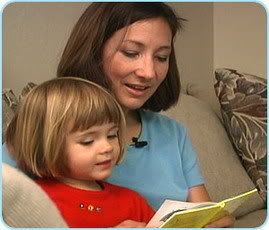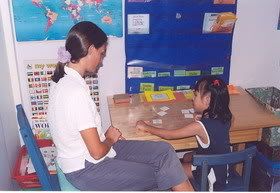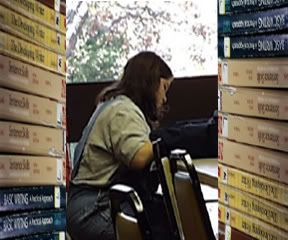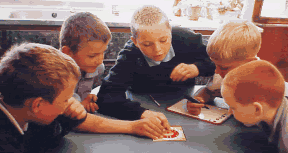Spoken language is noise which the experienced listener sorts into meaningful chunks. A child spends many years perfecting this sorting. In a similar way, a learner of a new language must sort out the unfamiliar sounds into pieces that make sense: phrases or sentences, words, syllables and even phonemes (the smallest sound segments). Reading experts have known for years that difficulty with the sorting process, or phonological skills, is directly connected to the reading and spelling problems of many students. More recently, researchers studying native English-speaking students who were having trouble learning a foreign language found that these students have problems similar to those of poor readers and spellers in that they do not perceive and manipulate the sound system and its corresponding written code effectively. In other words, the at-risk foreign language learners also have weak phonological skills. Moreover, the researchers found that when the struggling foreign language students were explicitly taught the phonology of the foreign language, they were able to learn the target language fairly successfully, and also improve their phonological skills.
This was good news for me as I was searching for a way to help at-risk students in the college-level intensive English program where I teach. Every semester, several of our students, who are certainly capable in many respects, are unable to make progress in their English classes. Typically, they display poor spelling and grammar skills, despite having what I term “lots of language.” In other words, they are not lacking in vocabulary or a general idea of how to express themselves; they cannot, however, control their grammar or get beyond that plateau of “fair” communication, a fatal flaw in writing classes. Usually, their reading skills are adequate for intermediate English as a Second Language (ESL) work, but not for more demanding reading.
When I first decided to find a way to help these students, I began searching the ESL literature for ideas. Because some of our students who had these problems were known to have learning disabilities (LD), having been diagnosed elsewhere before coming to our school, I combed the LD literature. Not much turned up in either field to give me any idea of why the students were having a hard time learning English until I delved into the literature. I decided to try teaching my students English phonology in a much more explicit way than is usually the case in ESL. I also decided to try using some other adaptations in teaching that reportedly had been effective for LD students learning foreign languages in classes adapted to their needs.

Because the foreign language learners who were having difficulties had poor phonemic awareness as well as poor phonological skills, my first priority was clear, direct teaching of the sound system of English.
Another lesson learned from the foreign language research was that the sounds should be taught one at a time in a clear sequence. I chose to start by teaching the short vowels in alphabetical order to match some other ESL materials I had, and I selected appropriate drills or activities.
The process requires lots and lots of repetition. Students with difficulty in the language area require much more time to process information and much more review and practice than average learners.
We continued on to long vowels, and the process became faster because the students had begun to discriminate sounds more accurately and knew what to expect in the activities and practices.
At first, the students, who were of college age or older and many of whom were graduate students, were skeptical of these lessons. When they began to see the results, however, they became enthusiastic and made sure to request handouts missed when they were absent. Those who knew they had made progress, but had not yet mastered the skills, asked if there were some way to have more lessons in a lab or some other classes.
Although there is not much research on teaching phonology to ESL students who are at risk, my students’ experiences clearly demonstrated the benefits of this instruction. Of course, their spelling improved dramatically, and few needed more sustained review and practice to maintain their gains. A more pervasive benefit was that they could perceive individual words in spoken sentences far more accurately than before. This resulted in significantly more accurate dictations and, so the students reported, a noticeably improved ability to follow conversations and proceedings in other classes. In addition to my observations of the students’ increased confidence in many domains, their other teachers reported similar improvements.
Another important benefit of the phonology instruction, though less directly documented outside of our class, was that the students’ decoding skills increased significantly. They amazed themselves by reading multisyllabic words with ease. Finally, overall, the students were able to do much better in classes than students with similar problems in our program who had not had such intervention.
It is my hope that research will bear out these benefits. In the meantime, our university is benefiting from these instruction methods by retaining students who otherwise might have dropped out of classes and by strengthening the foreign language acquisition skills of at-risk native English-speaking students.
By Robin Schwarz















